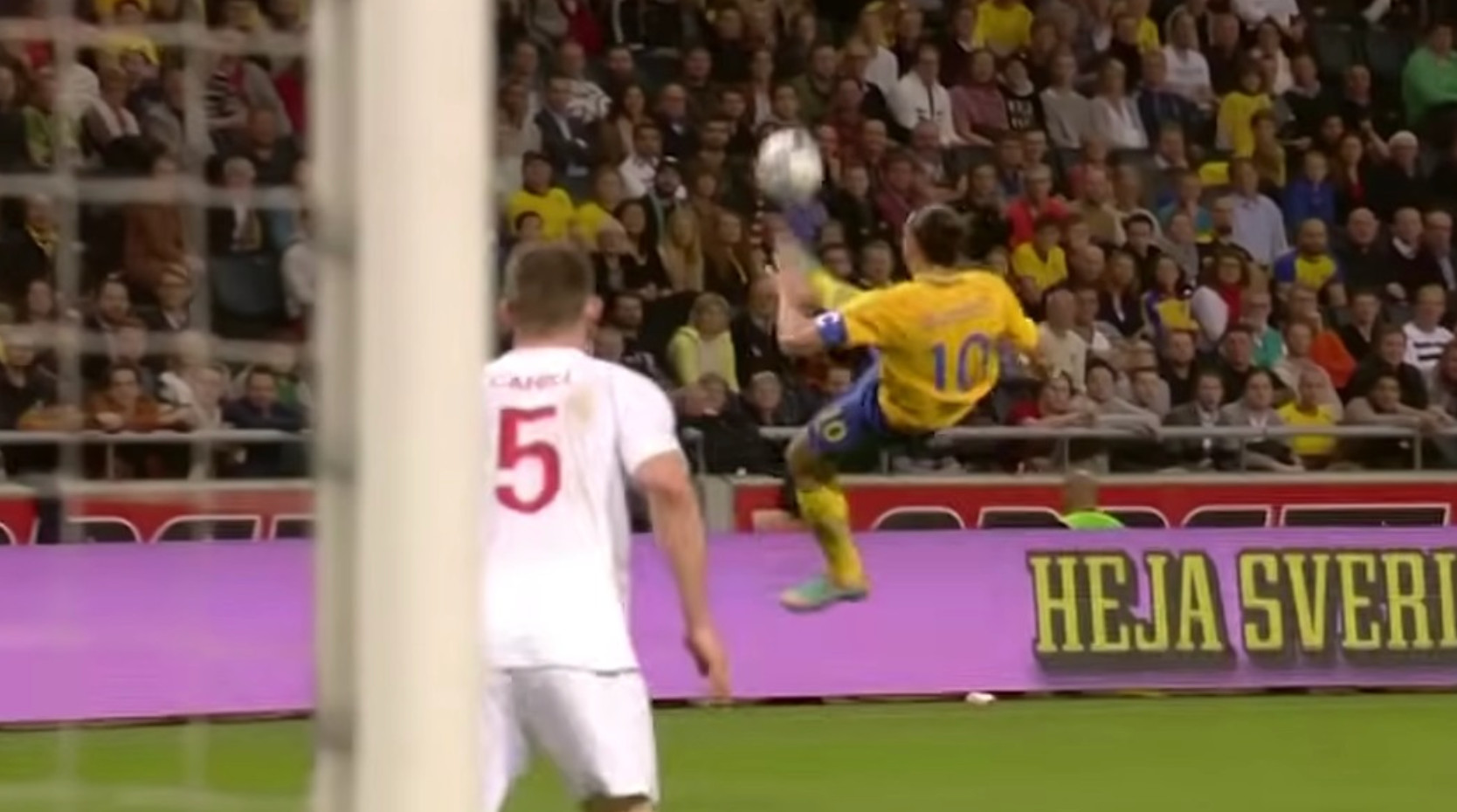When Football Becomes Cinema: The Real Goals That Live Like Movie Scenes
Contents
- When Football Becomes Cinema: The Real Goals That Live Like Movie Scenes
- Maradona vs. England, 1986: When Football Became Resistance
- Pelé vs. Belgium, 1965: When a Moment Becomes Myth
- Ibrahimović vs. England, 2012: Audacity as Identity
- Messi vs. Getafe, 2007: Echoes Across Time
- Roberto Carlos vs. France, 1997: Cinema of the Impossible
- Cristiano Ronaldo vs. Porto, 2009: Power as Form
- Iniesta vs. Chelsea, 2009: When Silence Becomes Sound
- Zidane vs. Leverkusen, 2002: Ballet of Violence
- Bergkamp vs. Argentina, 1998: Stillness in Fire
- Ronaldinho vs. Chelsea 2005: Joy as Weapon
- Pros and Cons of Turning Real Football Goals Into Movie Moments
- Why These Goals Work on Film
- FAQs
Recomended bookmakers
KEY TAKEAWAYS:
- Certain goals go beyond the scoreboard – They become emotional or cultural moments that reflect identity, history, or personality, which is why films amplify their meaning so powerfully.
- Cinema reframes how we remember football – Documentaries and biopics slow the game down, add context, and show how joy, rebellion, calm, or genius is expressed in a single strike.
- These goals live as part of football mythology – Maradona, Messi, Zidane, Ronaldinho, Bergkamp, and others created moments that endure not as highlights, but as stories shared across generations.

Film makes the moment of sport into an act of storytelling. It slows the world down, pulls the camera in closer, cuts to the crowd, brings sound in and out, layers commentary with silence, and adds context that the live match could only hint at. Some goals come alive even more in film than they did on the pitch. These aren’t mock or choreographed scenes; these are real goals from real matches, preserved and elevated through cinema.
Today, fans experience these moments not only in stadiums and living rooms but also through the shared tension of match discussions, predictions, and live odds offered by football gambling websites that have become part of how supporters connect with the drama of the sport.
Now, let’s review the most beautiful real football goals that found their second life in film.
Maradona vs. England, 1986: When Football Became Resistance
Diego Armando Maradona’s second goal against England in the 1986 FIFA World Cup is generally regarded as the “Goal of the Century.” But its cinematic power is fully realized in Asif Kapadia’s documentary “Diego Maradona” (2019).
On the broadcast of the match, commentary is frenetic and explosive. In the film, the goal is something else again: a moment of national catharsis, layered with the history of the Falklands War, Argentina’s political trauma, and Maradona’s personal fight against the world that adored and devoured him.
Kapadia treats the goal like an emotional climax in a biographical epic:
- The dribble becomes a symbol of a nation reclaiming dignity
- The roar in the stadium turns into one collective scream
- The celebration is salvation
That’s the power of cinema: A goal isn’t just a goal anymore; it’s a story of wounds, rebellion, and glory.
Pelé vs. Belgium, 1965: When a Moment Becomes Myth
In “Pelé” (2021), the Netflix documentary focuses on Pelé’s acrobatic overhead attempt against Belgium in 1965 — a moment often remembered as a goal, though its official outcome is debated. The film doesn’t try to settle the dispute. Instead, it treats the moment as movement raised to art.
Slow motion stretches the arc of the body; the camera circles as if studying sculpture; orchestral sound lifts the attempt beyond the match itself.
The truth of whether the ball crossed the line becomes secondary. What matters — and what the film preserves — is the essence:
joy, improvisation, and transcendence.
It isn’t remembered because it was scored. It’s remembered because it was beautiful.
Ibrahimović vs. England, 2012: Audacity as Identity
This goal is part of character studies.
The 30-yard (27 meters) overhead volley for Sweden against England in 2012 by Zlatan Ibrahimović is one of football’s most improbable acts, scored not out of necessity but out of belief in his own myth.
The biopic “I Am Zlatan” (2021) doesn’t reconstruct the moment—it shows real footage and cuts back to Zlatan’s internal world. The goal is treated not as an accident of brilliance but as the logical outcome of how Zlatan sees himself: fearless, unconventional, ungoverned.
In cinema, the goal becomes a statement: If there’s a way to shock the world, Zlatan will find it. Not a highlight, this is character development.
Messi vs. Getafe, 2007: Echoes Across Time
Lionel Messi’s slalom goal for Barcelona against Getafe in 2007 resembles Maradona’s 1986 goal uncannily — same length of run, same balance, same defenders left spinning behind him.
In “Messi” (2014), by Álex de la Iglesia, the scene is framed not simply as a great goal of an Argentine GOAT but as a moment of continuity across the generations.
The film positions the goal as:
- A mirror
- A question
- And a passing of spiritual lineage
Experts, teammates, childhood coaches — they analyze the movement the way musicians discuss a brilliant phrase of improvisation. The power of the sequence lies not in comparison, but in recognition: Football sometimes repeats itself, not by coincidence, but by destiny.
Roberto Carlos vs. France, 1997: Cinema of the Impossible
Some goals look fake. Roberto Carlos’ 1997 free-kick – a swerving, physics-defying meteor – for Brazil against France is one of them.
In “Bend It Like Carlos” (the series of analyses of ESPN in 2017), the goal is broken down like a scientific mystery:
- Trajectory visualizations
- Airflow models
- Slow-motion spin capture
And yet, after all the analysis, one thing is clear: Nobody is in complete understanding of how the ball did what it did. The role of the cinema here is philosophical: to remind us that the greatest moments in sport exist just beyond explanation.
Cristiano Ronaldo vs. Porto, 2009: Power as Form
Cristiano Ronaldo’s 40-yard rising knuckleball for Man United against Porto in the 2008–09 UEFA Champions League is among the cleanest strikes in football history. In “Ronaldo: Tested to the Limit” (2011), the goal is framed not as chance, but as science.
The movie measures:
- Muscle activation
- Hip rotation
- Foot contact timing
- Ball speed and turbulence
The result is cinematic reframing: Ronaldo isn’t lucky; he’s engineered. Football becomes biomechanics, physics, and architecture. The goal becomes proof of design by will.
Iniesta vs. Chelsea, 2009: When Silence Becomes Sound
Some goals don’t impress the eye; they shake the soul.
In the 2018 documentary “Take the Ball, Pass the Ball”, Andrés Iniesta’s last-minute goal for Barcelona against Chelsea isn’t framed as a highlight but as a seismic emotional event that encompasses:
- Guardiola collapsing to the ground
- Barcelona fans tearful
- Stamford Bridge frozen in disbelief
The movie frames this goal as destiny insisting on itself. It isn’t beautiful because of technique; it’s beautiful because of meaning. Cinema understands this better than football broadcasts ever could.
Zidane vs. Leverkusen, 2002: Ballet of Violence
Zinedine Zidane’s left-foot volley for Real Madrid in the 2002 Champions League final has been described as the most elegant goal ever scored.
In “Zidane: A 21st Century Portrait” (2006), his entire presence is captured as a character study – and the volley is the defining expression of his duality:
- Grace and brutality
- Timing and chaos
- Stillness and explosion
The goal turns into the revelation that art and aggression can be one.
Bergkamp vs. Argentina, 1998: Stillness in Fire
One touch to control, one to shift angle, one to finish, Dennis Bergkamp’s winner in the 1998 World Cup for the Netherlands is the clearest cinematic expression of clarity under pressure.
In “Stillness & Speed: My Story” (2014), the goal is presented as meditation under chaos. The world is frantic, but Bergkamp is still. Cinema loves those kinds of characters.
Ronaldinho vs. Chelsea 2005: Joy as Weapon
In “Ronaldinho: The Happiest Man in the World” (2022), Ronaldinho’s iconic stand-still toe-poke against Chelsea, at the time when he was wearing a Barcelona jersey, in the Champions League is framed not as a highlight but as a philosophy made visible.
He freezes time, surrounded by defenders; no run-up, no power stance, no overthinking. Just a bounce, a shimmy, and a smiling, effortless flick into the corner.
The film emphasizes:
- Playfulness rather than aggression
- Improvisation over structure
- Joy as the pure essence of football
This is football as childhood preserved inside adulthood — and the camera treats Ronaldinho not as a player but as a reminder of why the game exists in the first place. Where others chase domination, the Brazilian icon chases delight.
Pros and Cons of Turning Real Football Goals Into Movie Moments
| Pros | Cons |
| Adds emotional depth and shows why the goal mattered in a larger cultural or personal context. | Risks of over-romanticizing the moment and creating myth rather than truth. |
| Preserves legendary goals for new generations in a powerful, lasting way. | Repetition and constant retelling can dull the original magic. |
| Highlights personality traits — joy, rebellion, calm, elegance — making the player feel human and iconic. | It may reduce the sport to individual hero moments and overshadow the team aspect. |
| Turns football moments into stories that live beyond highlight reels and become part of cultural memory. | Narrative framing in film can distort perception, creating heroes and villains through editing choices. |
Why These Goals Work on Film
What unites all these moments is not technique, but meaning. A goal becomes cinematic when:
- It expresses personality
- It carries emotional weight
- It symbolizes more than the scoreboard
Cinema doesn’t make goals bigger; it reveals what was already there.
Some goals live on screens; others live in memory, culture, identity, and mythology. These are the ones that became stories. And stories never die.






